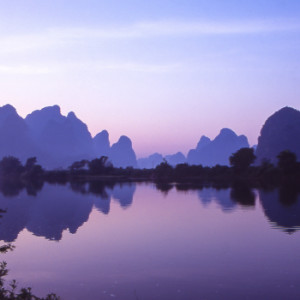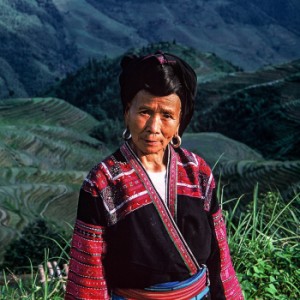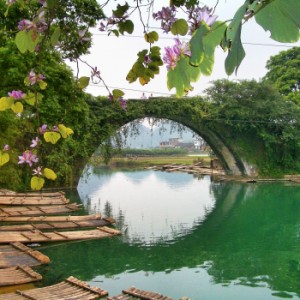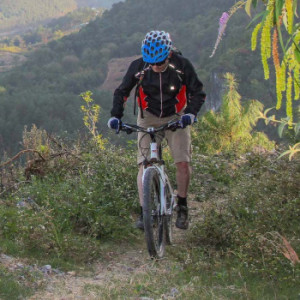
“Ride the fringes of China’s far northeast where vast forests meet epic grasslands; home to the last Ewenki reindeer herders in the ethnically diverse and naturally pristine borderland region of China, Mongolia and Russia”
Click image to start slideshow
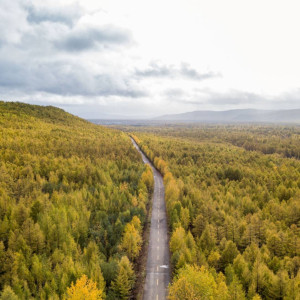

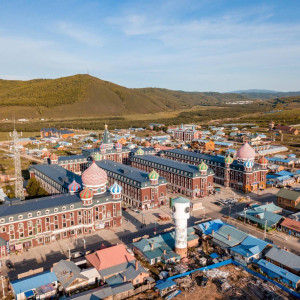
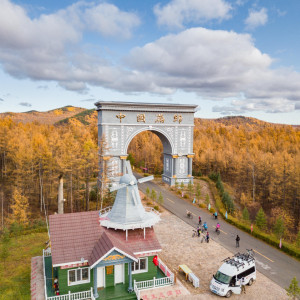
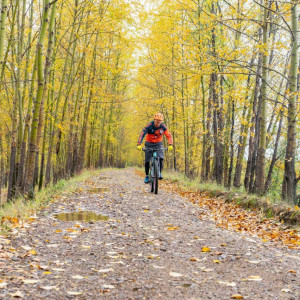
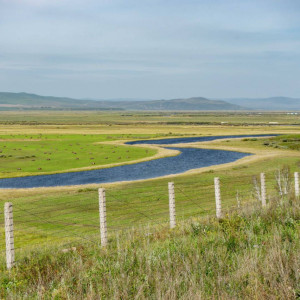
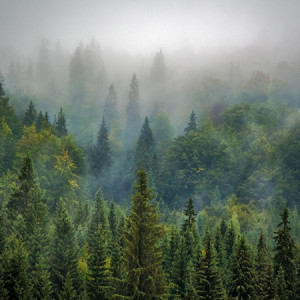
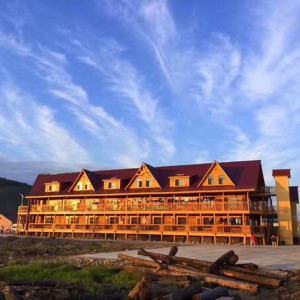
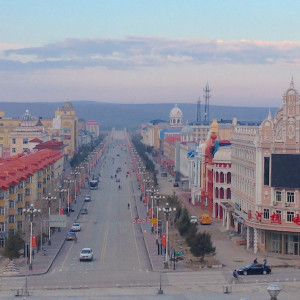
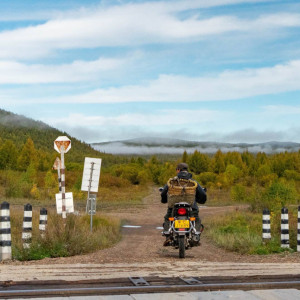
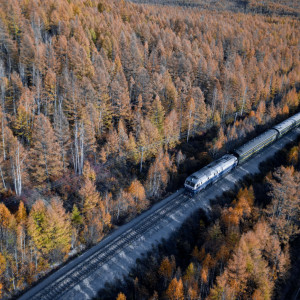
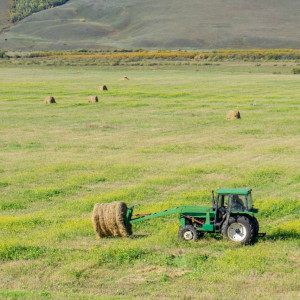
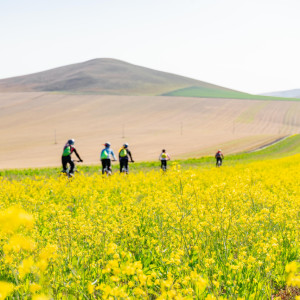
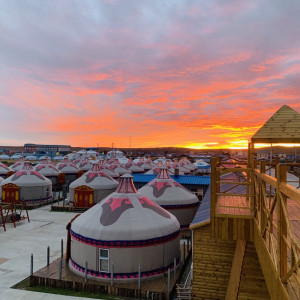
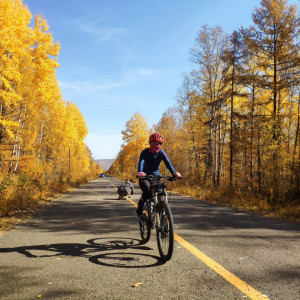
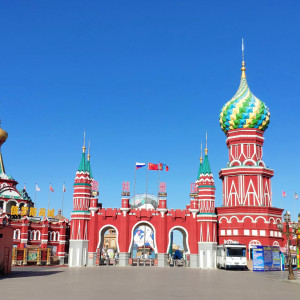
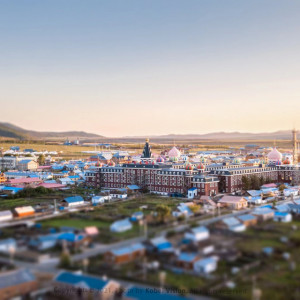
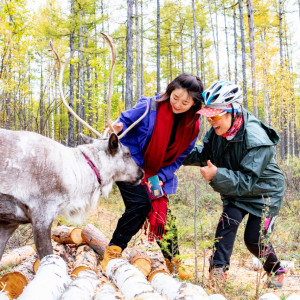
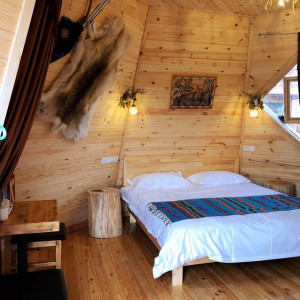
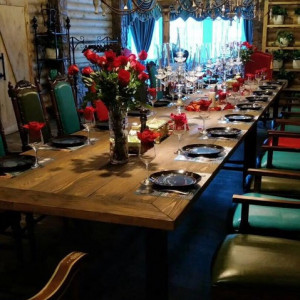
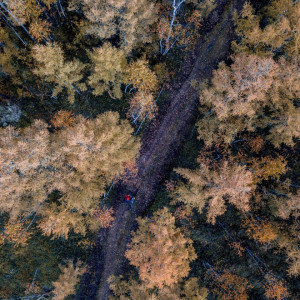
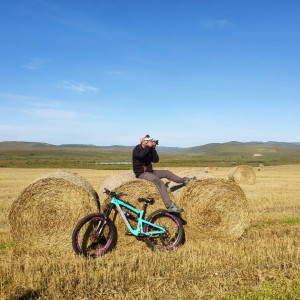
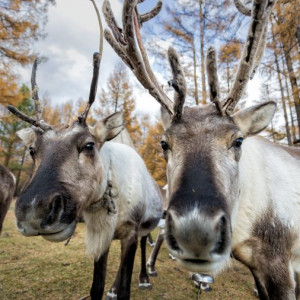
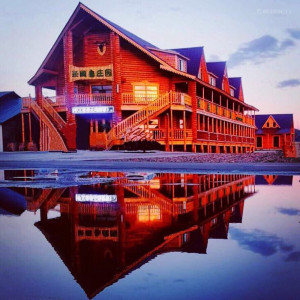
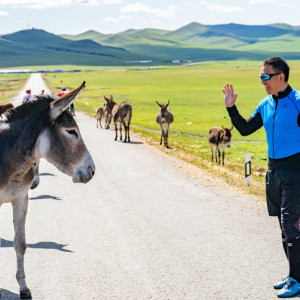
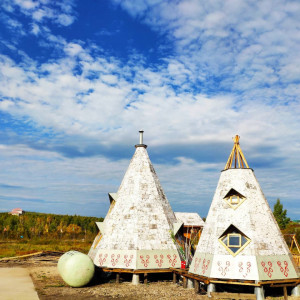
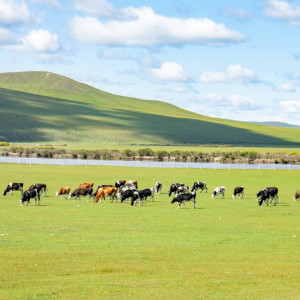
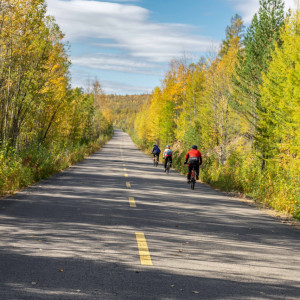
-
Day 1: Arrival in Mohe, Heilongjiang
DinnerWelcome to Mohe and the top of China! We’ll meet in the evening to go over the tour and answer any questions. Afterwards, we’ll head out for a welcome dinner to mark the start of our adventure. In the evening, which are long at this latitude, we’ll have time to check out Mohe town and it’s Russian influenced architecture. If arriving early, there are options to explore views of the Heilongjiang, or Amur River, to the north where the village of Beiji sits at China’s most northerly point.
***Getting to Mohe****
Due to the reduced number of tourists travelling over the last 18 months the Mohe government has taken the opportunity to rebuild their airport which means flights into Mohe have been suspended until mid 2022. This makes getting to Mohe more complicated and time consuming than usual, but obviously worth the effort! There are two options available:
Fly into Harbin on Friday in time to catch the K7309 at 17:30 (16 hours) arrive 09:20 or the K7041 at 18:21 (18 hours) arrive 12:11 the next day.
If time is limited on Friday it is possible to get to Mohe on the Saturday. There are early morning flights from Beijing to Jiagedaqi Airport (with one stop) and we can organise transport from there to Mohe (6 1/2 hours).
Feel free to contact us for help getting to the start point.
-
Day 2: Cycle to Mangui - Daxinganling Forest
Breakfast, Lunch & Dinner 135 kmWe’ll set everyone up on the bikes after breakfast and make our way into the forest. We’ll cover quite a bit of ground today on quiet, flat country roads. We’ll be be cycling in the Daxinganling Forest over the next few days, immersing ourselves in the pristine air. Our destination is Mangui, which lies across the province border in Inner Mongolia, a multi-ethnic area with a resident population of 9000 including Mongolian, Manchu, Korean, Hui, and Ewenki. Set on the banks of the Menkuyi River, this small town sees few visitors and makes for a serene stop on our journey.
-
Day 3: Cycle to Jinhe - Daxinganling Forest - Ewenki Visit
Breakfast, Lunch & Dinner 120 kmWe continue our forest ride throughout the day, with our destination being the small town Jinhe, named for the Jinhe River on which it lies. Today we’ll stop to visit a family of reindeer herders. This family are members of the Aoluguya tribe, a branch of the nomadic Ewenki ethnic group that is one of the 56 minority groups recognised by China. Occupying parts of Siberia and the Greater Khingan Mountains in China for around 3000 years, they are thought to be descendants of proto-Mongolian tribes that adapted to life in the dense taiga forests of Siberia by adopting nomadic reindeer husbandry and hunting. Now numbering around 30,000, most Ewenki have been re-located into towns and have adopted sedentary lifestyles. Some still maintain their reindeer herding and prefer to live closer to the forest, though bans on hunting have made many dependant on tourism or other means for survival. Culturally, they have some similarities to North American indigenous people such as dwelling in hide teepees, practicing shamanism, a nomadic lifestyle and an animistic worldview. The proximity to other cultures, such as Mongolian, Manchu, Russian and Han, have influenced their practices and customs with many incorporating Tibetan llamaism or Eastern Orthodox Christianity into their beliefs.
-
Day 4: Cycle to Mordaga - Off-road forest ride
Breakfast, Lunch & Dinner 83 kmOne of the highlight rides of the tour, we take to quiet dirt trails through pristine forest to make our way to Mordaga. Our ride will tackle us through the forest with the vegetation gradually changing until we emerge at the northern side of the Daxinganling to flatter open plains. Mordaga National Forest Park was the first National Park established in Daxinganling and remains China’s largest. We stay in Mordaga township for the evening.
-
Day 5: Cycle to Shiwei - Russian border town
Breakfast, Lunch & Dinner 90 kmWe leave behind the Khingan Mountains and forests today and begin our riding across the grassland steppe. The route is flat and smooth riding all day. Shiwei, a small town on the banks of the Ergune River, which forms the China-Russia border, is surrounded by mountains and grassland. There are 2000 people living in Shiwei, of which 60% are of Russian descent, many involved in trade across (one of the many) Friendship Bridge linking the two countries.
-
Day 6: Cycle to Qika - Eerguna Wetlands
Breakfast, Lunch & Dinner 115 kmWe’ll be cycling along the China-Russia border today, skirting the Eerguna wetlands. These wetlands are Asia’s largest with migratory birds flying as far south as the Malay Peninsular. At the confluence of four rivers, this wetland importance is under threat from encroaching development though government initiatives are attempting to alleviate this impact. During summer months, dozens of species of birds and animals may be spotted. Our ride takes us to Qika, on the edge of the Hulunbuir Prairie.
-
Day 7: Cycle to Heshantou - Hulunbuir Grassland
Breakfast, Lunch & Dinner 85 kmOpen, endless grassland is our back drop for the next two days: small hills and streams flow across endless green with white Mongolian gers (yurts) and sheep starkly dotting the landscape. The Hulunbuir Grassland is one of China’s best preserved; many others falling into erosion and desertification due to bad agricultural practices. Whilst starkly open, with seemingly little vegetation, and enduring incredibly harsh winters, grasslands like these are one of the most important ecological systems in the world, covering around 40% of the earth’s land and sustaining vast amounts of wildlife. From the Far East, stretching all the way across Mongolia through Russia, Ukraine through to Hungary; along the Black Sea and Caucasus through Georgia, Armenia and Turkey; around the Caspian Sea from Kazakhstan through Afghanistan to Iran: these greater Eurasian grasslands also supported the “felt nations”, nomadic herders of various ethnicities that grazed livestock and hunted wildlife. Starker even than the Great Wall, grasslands form a much clearer borderline between the nomadic peoples of the north to the sedentary farming peoples of the south.
Our ride will take us past Heshantou (Black Mountain) where lies the barely visible remains of an ancient city dating back to the Liao Dynasty (916-1125). The Liao Dynasty was formed by a Mongolic speaking ethnic group, the Khitans, that ruled northern China, Korea and eastern Russia. At the end of their rule their nobles retreated into Russia and were seen as Chinese.by the locals, hence, in Russian and Kazakh, Khitai is the word for China.
We’ll lodge tonight in Mongolian style ger (yurt) accommodation on the grassland.
-
Day 8: Cycle to Manzhouli - Hulunbuir Grassland
Breakfast, Lunch & Dinner 50 kmAn early morning’s reward is the spectacular steppe sunrise over the grassland before our final ride of the tour. We’ll cycle for 50km before packing up the bikes and transferring by bus (2 hours) to our final destination in Manzhouli. China, Russia and Mongolia’s largest land port and integrated customs has attracted a melting pot of more than 20 ethnic groups engaging in cross-border trade that goes back 100 years. We’ll have time to check out this far flung frontier town before celebrating the end of our journey over a Russian style dinner and drinks. Ganbei! Za Zdarovje! Togtooy!
-
Day 9: Departure Day
BreakfastToday is departure day and you are free to leave at any time.
***Flights from Manzhouli depart to Beijing at 11:45, 21:30, 23:20.
Overview
This tour begins in the northernmost extremity of China in Heilongjiang Province (if you are looking at a map of China, which is said to resemble a chicken or rooster, it is located at the top of the head!). Mohe is the start point and is nicknamed China’s “arctic town” due to it’s high latitude, sub-arctic climate and the (occasional) appearance of the northern lights. Looking more than a little Russian in appearance, Mohe is located just 40km from the Heilongjiang River (Black Dragon), or Amur River, across from which lies Russia itself. This frontier region has over its history been in the control of Russia, Japan and China but it was for the most part occupied by nomadic tribes that favoured the area for hunting, fishing and raising livestock, such as the Ewenki, Oroqen, Daur, Hezhen and Mongolian peoples. Today, these minorities co-exist with Han, Manchu, Russian and others; attracted to the region for the vast timber, furs and mineral resources.
Our route crosses into Inner Mongolia and into the Daxinganling Mountains, or Greater Khingan Range, which stretches 1200km north to south. This region is China’s largest forest region and is covered by larch, birch, aspen, and pine. It is also rich in wildlife including brown bear, deer, elk, marten, hare, wild boar, pheasants, sables and others. We make our way to the picturesque Russian border town of Shiwei, before continuing through Eerguna wetlands, one of Asia's largest, and across the vast Hulunbuir grassland to finish in the border port of Manzhouli. The cycling distances are quite long on some days but the ride is mostly flat on quiet roads through river valleys and across open grassland so easily accessible to the intermediate rider or beginners up for a challenge. There is one day of off-road riding on country tracks, with no extra skill involved. Accommodations are in a range of comfortable lodgings ranging in style from hotels, yurt hotels to Russian hotels.
Airport or Train Station Transfers
Airport/ train station pick ups and drop offs are included in the tour price. Please make sure you give us details of your arrival and departure, including flight or train details, date and time, so we can arrange your transfers.
Additional Accommodation
Arriving early or want to stay on after the tour ends? No problem! Just let us know if you'd like to book extra accommodation in the tour hotel at either the start or finish of the tour and we will arrange it for you or indicate when booking your preferred dates.
Further Info
For additional information regarding guides, accommodation and sleeping arrangements, cycling grades, food, bikes, etc you can head over to our About section to see more about how we run our tours.
-
Can we change the itinerary or customise the tour?
Not for publicly listed dates, but if you have your own group or date in mind, Yes. If you want to make a private booking we can help design a tour that suits you. You may have ideas based on any of our tours or something in mind that you can't find on our website. Just get in contact with us and let us know what you have in mind and we'll try our best to make it happen!
-
Do you cater for vegetarians?
Yes we do! If you have any dietery requirements just let us know when you book in the space provided (Additional Requests). For any severe alergies or other conditions it is best that you let us know in advance so that we can prepare and/ or advise you on what we can provide or what you might need to bring so that are well catered for.
-
What about Covid 19?
Covid restrictions have passed for most countries and it is now possible to obtain tourist visas for China. For China you may need to provide a personal Covid test within taken 24 hours before your departure, these are only checked randomly, and can also be taken on arrival.
During all our tours we take care to avoid any transferring of any viruses, such as Covid, through providing hand sanitisers and minimising exposure. As with any illness, all care will be made for the participants well being during the tour and we will help with any arrangements that need to be made if the participant needs to leave the tour (this will be at the cost of the participant). Costs for unused segments of tours cannot be refunded, for any reason, as all tour costs are paid in advance.
-
How to I make a booking and payment?
Simply go to the "Dates" section of the tour page and click on the "book now" button, or click on "book" on the website header and select your preferred tour and departure date. If you are booking onto an on demand tour and have your own dates in mind there will be an facility for you book here too.
Before you book, we recommend that you read through the tour details and our booking terms and conditions. You can contact us about the trip if you have any questions at info@bikeasia.com or set up a time to chat about the tour.
Upon completion of your booking form we’ll send you an acknowledgement email and invoice for a deposit. All long trips (7 days or more) require a deposit of 300USD to guarantee your place. Trips departing within 60 days at booking will require full payment. Once your deposit is received, we’ll also send you a pre-trip information pack that will give you added information about the tour, the region you’ll be travelling through, a checklist of things to prepare, suggestions for packing, training tips and more. For shorter trips and day tours we require full payment 30 days prior to the commencement of the tour or as soon as convenient if booking within 30 days of departure.
Payments can be made on credit card via Paypal or through a direct bank transfer in most currencies. Information on payments will be present on your initial deposit invoice. Paypal payments will incur a 4% fee.
| Start Date | End Date | ||
|---|---|---|---|
| 24 Aug 2024 | 01 Sep 2024 | Book Now | |
| 23 Aug 2025 | 31 Aug 2025 | Book Now | |
| Choose your own date | Book Now | ||
Contact us for customised or private tours.
Tour Stats
- China
- 9 days
- Cycling Tour
- 4
- 600 km
- 10 - 20 People
- 1530 USD
Highlights
- Breathe in the pristine air of Daxinganling, China’s largest boreal forest
- Visit Mohe, China’s northern-most town, on the Russian border
- Ride through pristine forests and open steppe land on quiet country roads
- Meet the local minorities such as Orochon, Hezhen, Daur and Ewenki reindeer herders
- Explore the Hulunbuir grasslands and Mongolian culture
- See the Eerguna Wetlands, one of Asia’s largest
- Soak up the Russian vibe of Shiwei, a charming Russian border town
- Stay in charming accommodations from Russian hotels to Mongolian Gers (yurts)
- Sample local Dongbei cuisine, local ethnic specialities and Russian fusion
- Relax and ride carefree with support vehicles and attentive knowledgeable guides
What's Included?
- 8 Nt’s accommodation in comfortable hotels or guesthouses
- All meals as listed
- Airport transfers
- Bike Asia cycling leader and local cycling guide(s)
- Support van(s)
- Great quality mountain bikes
- Water, snacks and fruit on cycling days
- Entry tickets for included tourist sites
What's Not Included?
- Flight
- Personal travel insurance
- Tips, gratuities and personal expenses

